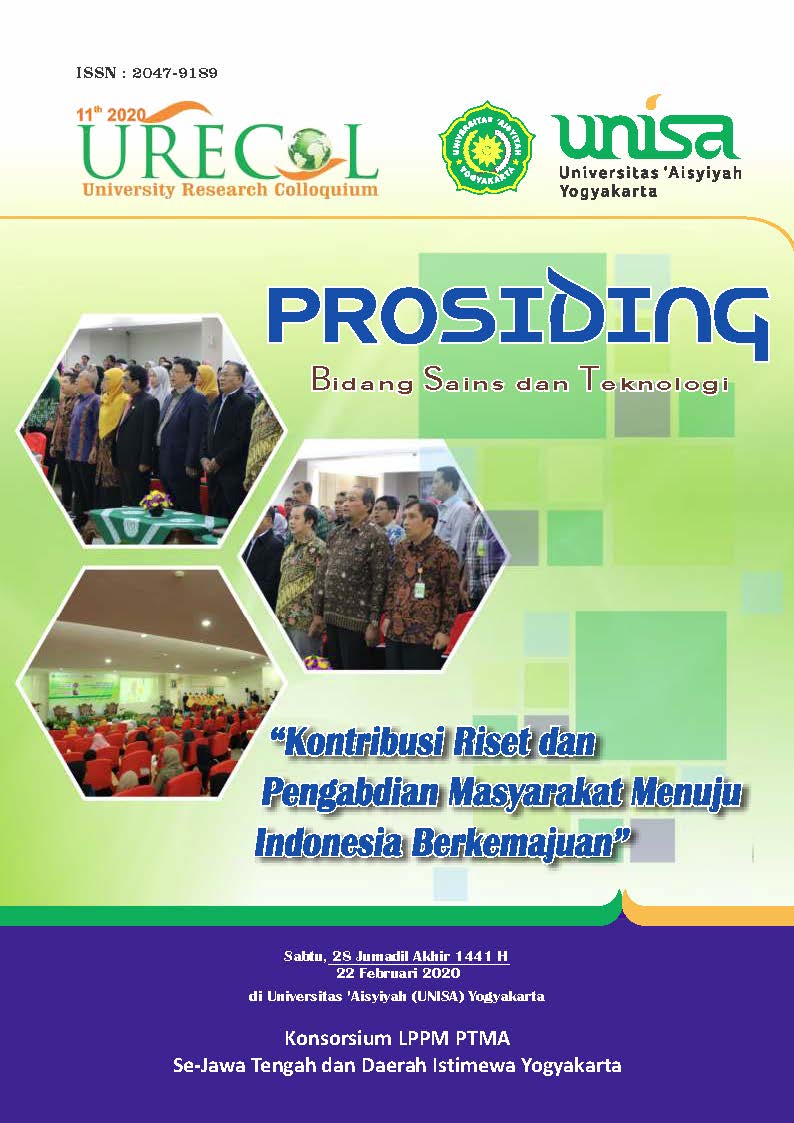Komponen Interactive Read-Aloud dalam Konteks EFL
Keywords:
Interactive Read-Aloud; literasi; konteks EFLAbstract
Literature Review ini bertujuan untuk menyajikan bagaimana komponen – komponen Interactive Read-Aoud (IRA) yang banyak digunakan oleh guru – guru pengajar bahasa dalam konteks yang beragam dan mendiskusikan bagaimana mengimplementasikannya dalam konteks English as a Foreign Language (EFL) di Indonesia. Metode yang digunakan yakni studi literatur dengan menggunakan tujuh komponen IRA dalam penelitian Fisher dkk. (2004) sebagai pustaka utama yang akan diulas dengan pustaka lainnya untuk memaparkan bagimana penggunaan IRA dalam konteks EFL. Dalam mengkontekstualisasikan ketujuh komposnen tersebut, ulasan mendalam akan dilakukan dengan mempertimbangkan latar belakang budaya, kompetensi bahasa guru EFL, level kompetensi siswa, dan tingkat ketertarikan buku. Harapannya, ulasan ini dapat menjadi pedoman bagi guru EFL untuk membantu mengatasi keterbatasan bahasa dan mendotong penggunaan IRA sebagai kegiatan untuk memahami bacaan berbasa Inggris bersama siswa.
References
Amer, A. A. (1997). The effect of the teacher's reading aloud on the reading comprehension of EFL students. ELT Journal, 43-47.
Aukerman, M. (2013). Rereading comprehension pedagogies: Toward a dialogic teaching ethic that honors student sensemaking. Dialogic Pedagogy, 1.
Barrentine, S. J. (1996, September). Engaging with reading through interactive read alouds. Wiley and International Reading Association, 36-43.
Boyd, M. P., & Devennie, M. K. (2009). Student Voices and Teacher Choices: Selecting Chapter Book Read-Alouds. Childhood Education, 85(3), 148.
Fisher, D., Flood, J., Lapp, D., & Frey, N. (2004). Interactive read alouds: Is there a common set of implementation practices? International Reading Association, 8-17.
Gambrell, L. B. (2011). Seven rules of engagement: What's most important to know about motivation to read. The Reading Teacher, 65(3), 172-178.
Gibson, S. (2008). Reading aloud: a useful learning tool? ELT Journal, 29-37.
Hoffman, J.V., Roser, N.L., & Battle, J. (1993). Reading aloud in classroom: From the modal toward a “model.” The Reading Teacher, 46(6), 496-503.
Hoffman, J. L., Collins, M. F., & Schickedanz, J. A. (2015). Instructional Challenges in Developing Young Children's Science Concepts: Using Informational Text Read-Alouds. Reading Teacher, 68(5), 363-372.
Johnston, V. (2016). Successful Read-Alouds in Today's Classroom. Kappa Delta Pi Record, 52(1), 39-42.
Lyster, R., Collins, L., & Ballinger, S. (2009). Linking languages through a bilingual read-aloud project. Language awareness, 18(3-4), 366-383.
Malu, K. F. (2013). Exploring Children's Picture Storybooks with Adult and Adolescent EFL Learners. English Teaching Forum, 51(3), 10-18.
Morrison, V., & Wlodarczyk, L. (2009). Revisiting read?aloud: Instructional strategies that encourage students' engagement with texts. The Reading Teacher, 63(2), 110-118.
Oueini, H., Bahous, R., & Nabhani, M. (2008). Impact of read-aloud in the classroom: a case study. Reading, 8(1), 139-157.
Pinnell, Gay Su, and Scharer, Patricia L. Extending Our Reach: Teaching for Comprehension in Reading, Grades K-2. USA: The Ohio State University.PISA 2018. (2019). “Insights and Interpretations”. https://www.oecd.org/pisa/PISA%202018%20Insights%20and%20Interpretations%20FINAL%20PDF.pdf . 26 Desember. (26 Desember 2019).
Silverman, R., Crandell, J. D., & Carlis, L. (2013). Read alouds and beyond: The effects of read aloud extension activities on vocabulary in Head Start classrooms. Early Education & Development, 24(2), 98-122.
Toth, A. (2013). Not Just for After Lunch. The Reading Teacher, 67(3), 203-207.
Trealease, Jim (2013). The Read-Aloud Handbook. USA: Penguin Books.
Wiseman, A. (2010). Interactive Read Alouds: Teachers and Students Constructing Knowledge and Literacy Together. Springer, 431-438.
Worthy, J., Chamberlain, K., Peterson, K., Sharp, C., & Shih, P. Y. (2012). The importance of read-aloud and dialogue in an era of narrowed curriculum: An examination of literature discussions in a second-grade classroom. Literacy Research and Instruction, 51(4), 308-322.
Worthy, J., Durán, L., Hikida, M., Pruitt, A., & Peterson, K. (2013). Spaces for dynamic bilingualism in read-aloud discussions: Developing and strengthening bilingual and academic skills. Bilingual Research Journal, 36(3), 311-328.
Price P, Guo S, Hirschmann M. Performance of an evaporator for a LPG powered vehicle. Applied Thermal Engineering. 2004; 24(8):1179–94.
Alahmer A. Thermal analysis of a direct evaporative cooling system enhancement with desiccant dehumidification for vehicular air conditioning. Applied Thermal Engineering. 2016; 9(8):1273–85.
Downloads
Published
How to Cite
Issue
Section
License
Copyright (c) 2020 Fadillah Sandy, Lintang Muliawanti

This work is licensed under a Creative Commons Attribution-NonCommercial 4.0 International License.



